About
My Burgundy Adventure
It still gives me a frisson of excitement, no small measure of disbelief and gratitude for my good fortune that I’m making wine in Burgundy, although to say I am making wine is too presumptuous. I help the grapes into the bottle to allow the terroir to speak. Well that’s the intention.
I have tasted thousands of wines over the past fifteen vintages in Burgundy. At first I was captivated by identifying the individual characters of the vineyards, each with its unique terroir. And as the years have passed, it’s been a joy to see the expression change with the style of the vintage and the interpretation of the winemaker.
Now I have the opportunity of being the latter. Handling the grapes offers a more practical way of furthering my knowledge of the terroir… and after yeas of being a wine critic, it puts me in the hot seat. What a challenge!
Key to this was accessing the best quality fruit from vineyards that have been meticulous cared for with healthy ‘living’ soil. Grapes, grapes, grapes. The question is where to source the best? The answer was clear, from the domaines I know well.
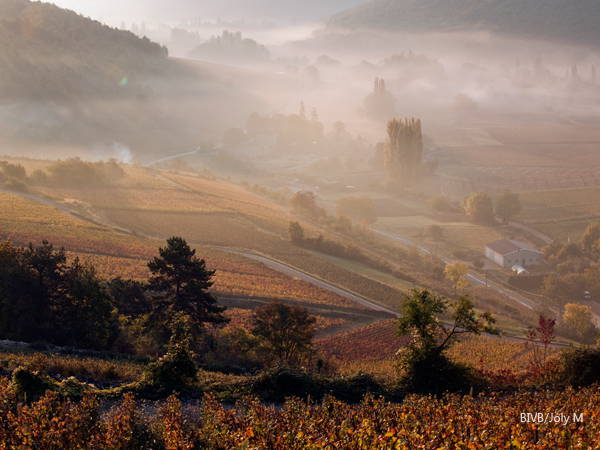
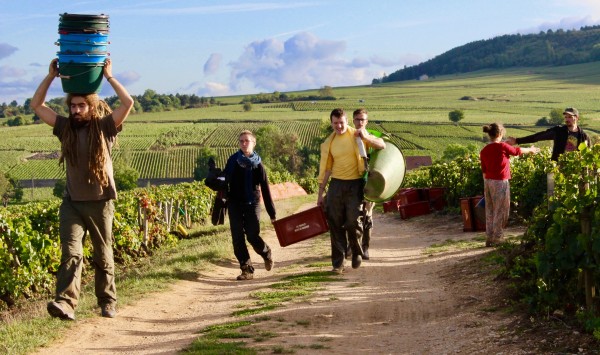
The Domaines
In June 2017 I approached a few domaines in the Côte de Beaune to ask if they might sell me some of their grapes. I decided to start with white. Meursault was the obvious choice for it has such a diversity of terroir at village level. Of the lieux-dits, Les Narvaux is a great favourite. It is a stony terroir on a warm slope. It has a strong personality of firm, sometimes muscular minerality. Vincent Boyer stepped forward with the offer of grapes from a parcel his oldest vines in the heart of his vineyard in Narvaux And so with this wonderful offer, my venture was off to a great start.
As the Meursault went into barrel I was mustard keen to crack on with my red. I grasped an opportunity to buy organic Savigny-Lès Beaune grapes from the lieu-dit Les Bas Liards. It’s a terroir with a clear identity from which I could make a silky textured, fruity and accessible style to allow me to communicate my terroir project without the need to wait. It was ideal to kick off, while my sights were set firmly on sourcing grapes from domaines in the next vintage.
And it happened. In 2018 Domaine Rossignol Trapet offered me three barrels of Gevrey-Chambertin grapes from Combes du Dessus. This exceptionally well sited lieu-dit, is among the village grouping just below the premier cru on the hill, down slope from Cazetières. The old vines here tap into the limestone. My kind of place. Nicolas and David Rossignol work bio-dynamically and I am sure this is responsible for the lovely energy in their wine.
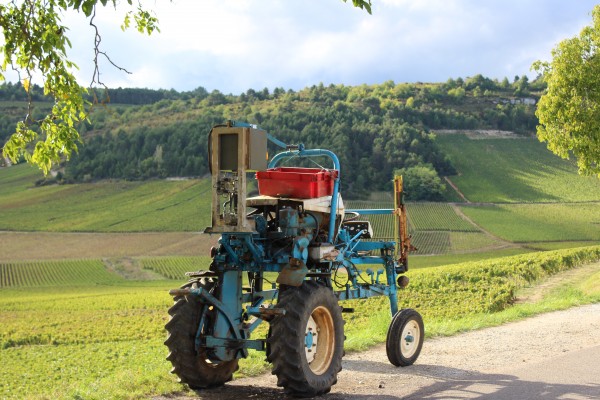
Buying from domaines, who do not usually sell their precious fruit, is an unusual approach. I am incredibly fortunate that they have made an exception to support my terroir project.
Specific Sites
It’s exciting to work with a parcel of grapes which would normally become part of a blend. Rossignol Trapet have many parcels around the village which are blended into a united expression of Gevrey-Chambertin. This was a chance to discover the character of Combes du Dessus. Vincent had never vinified the old vine Narvaux separately and was curious to see what it contributes to his blend. So with these two village wines the concept was crystallising – to vinify grapes from a lieu-dit or specific part of a vineyard which, for some reason, be it the soil or the vine age, could stand alone.
Premier Cru
I was soon to have the chance at premier cru level to put this concept into practice. Nicolas Rossignol, of Volnay, stepped up with the offer of Santenots… and the opportunity of selecting a parcel within his two hectares of Santenots. It did not take long to make my choice of the stony section at the top, on the Volnay side.
And the bounty continued with En Chevret – ah! the beauty of the generous 2018 vintage. Chevret lies under Les Caillerets and beside En Caillerets. “You interested?” Nicolas asked, as he fork lifted the cases from the van. “Was I indeed!” It is the ‘unknown’ Volnay premier cru as most of it is made by Nico. The grapes which tumbled gently onto the sorting table were from the lower part of his vineyard, where there is a little more clay. It’s adjacent to his higher part of Santenots. So I have grapes from neighbouring vineyards and parcels, which are completely different in character.

Making Wine
I make no claim to be a winemaker. I follow the grapes as they lead the way. Making wine seems to be a blend of nurturing and alchemy… and a bit of gentle plumbing. I’ve made two vintages now while working in the winery in which I made them. In 2017 this was in Château de Bligny where I worked as a cellar rat for Domaine Clos de La Chapelle. Dominique Lafon makes his negoce wines in Bligny so it was an excellent opportunity to observe and learn from his approach… peering over his shoulder while he racked his must off the lees.
In 2018 Nicolas Rossignol invited me to make the wines in his winery. I have been very happy in my new vinous home working as a cellar rat in this gleaming, purpose built and highly efficient winery outside Beaune. Long hours, very physical, learning on the job and quickly, during the hurly burly of vintage with so much fruit arriving. I loved it. There were fifty cuvées in 2018 – fifty opportunities to learn. At the close of every day we tasted every tank and Nico made his decision for the following day. Each tank is treated as an individual. Nothing is done by rote.

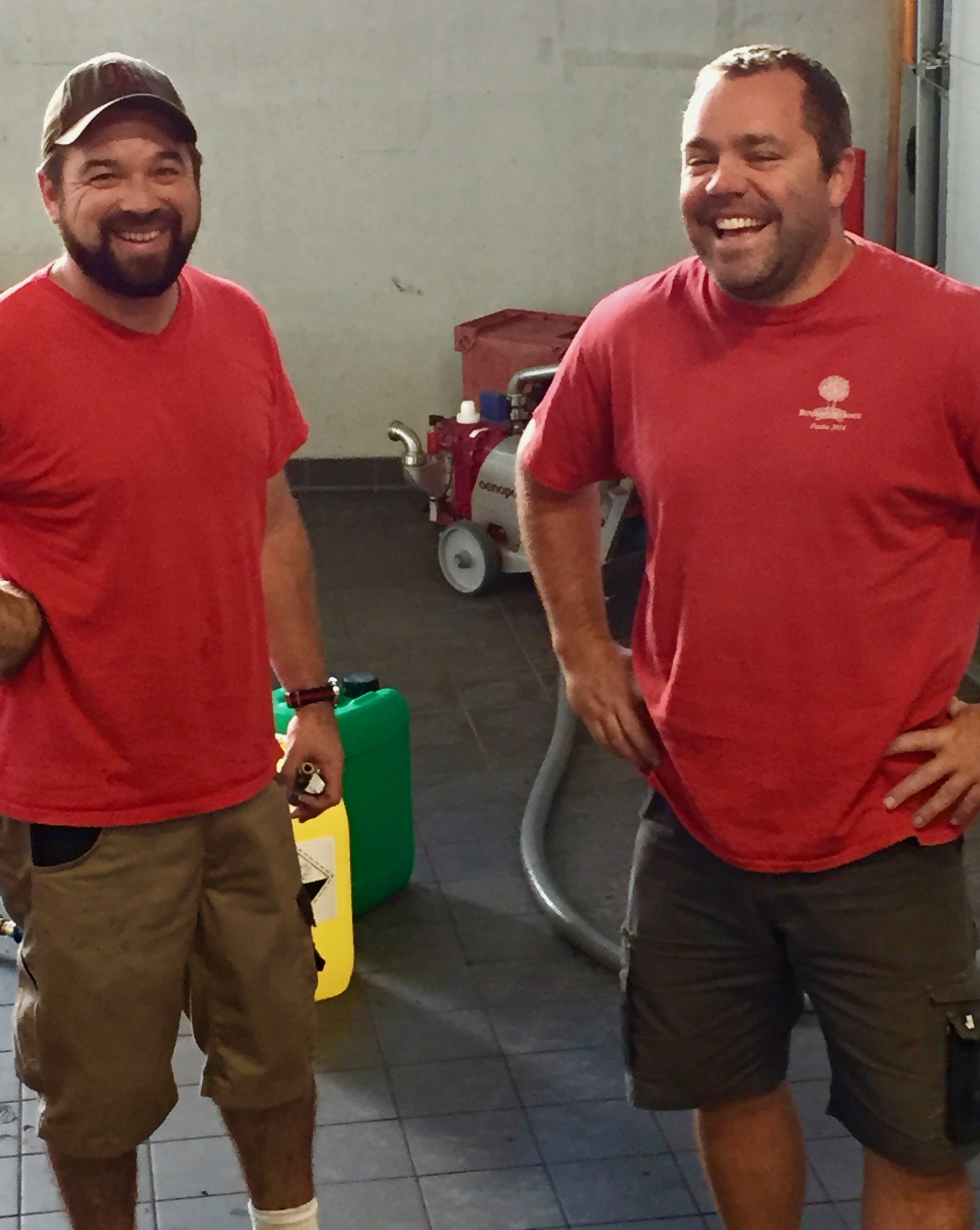
My reds were in the daily beauty parade, but I made my decisions – some of which Nico endorsed, at others he smiled suggesting he has tried this before. We have different approaches to both Santenots and the Chevret and the wine reflects this. I am very fortunate with Vincent and Julian on hand there is always someone to ask if I need help with my wine.
Now my wine 2018 is in barrel in the splendid cellar. The red A in Sarah Anne Marsh references Nico’s red N – a small homage.
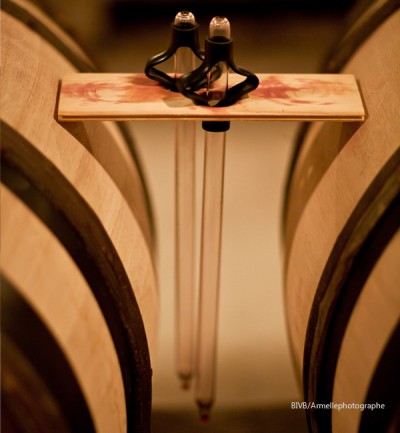
My Approach
It’s important for me to make premier cru that has the capacity to age, while having the fruit and accessibility to be enjoyed in youth. Pinot Noir gives instant pleasure, but a fine wine from Burgundy should also have the structure to allow it to evolve beneficially for ten to twenty years depending on the quality of appellation and vintage. With age the layers peel away to reveal the soul of the wine. My hope is to balance the silky texture and the perfume of Pinot Noir with sufficient body and structure to enable the wine to mature.
Tannins and Trends
Red Burgundy is a sensual wine; a millefeuille of perfume and texture. Tannins define the texture, its depth, delicacy, suppleness or grip. I like ‘light’ wines and aspire to make wine with elegance and refinement of texture, but with intensity, layering and depth. The challenge is finding the point of harmony and equilibrium and of course the terroir has to lead. While I love high wired minerality, clay soil will give a richer, depth of texture and more body.
Everyone speaks of infusion. Tasting hundreds of barrel samples for The Burgundy Briefing each vintage, it’s clear that extraction has improved significantly in the past 15 years. If the tannic 2005 were made today, it would be more approachable with no loss of ageing capacity.
There are delightful ethereal wines focused on perfume, but I want more than a whisper of tannin. I want texture, but it has to be elegant – be it silk, satin, velvet, taffeta; moreover tannins can give tension and freshness in a warm vintage. And there must be substance in the palate to support ageing. For me it’s all a matter of balance.
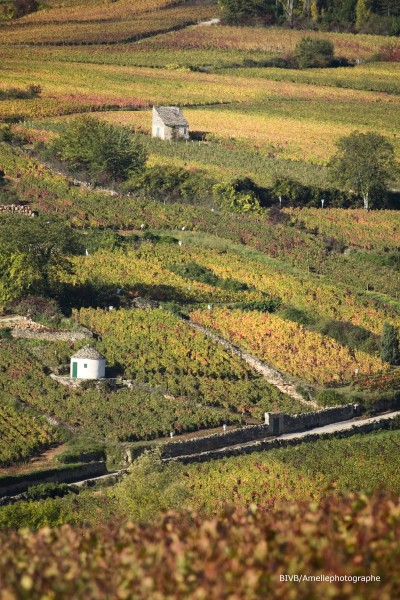
Following the terroir
With each vintage I hope to refine my approach in an attempt to achieve this. Each cuvée is treated differently and in 2018 two of the three had some whole bunch. I like whole berry. I use both remontage and pigeage. I like to do my pigeage by foot… just gently standing on the cap to submerge it. The remontage is only ever half the juice, often less, and only with the super delicate pump. I don’t work every wine every day. It depends on the tasting. The 2017s received between 5 and 6 pigeage, 2 or 3 remontage and 1 délestage in total.
The terroir will determine the style of the wine. It’s like rearing a child, while learning to be parent through experience. You have certain values to instil, while allowing the wine to develop its own personality. Knowing the climat I have expectations of the wine’s character, but there can be surprises from a specific parcel within it.
Acknowledgement. My ‘terroir’ project is made possible with the support of the domaines on the Côte d’Or. Relationships forged over the past fifteen years to write The Burgundy Briefing Vintage Report. I am fortunate and grateful.
So, that’s my story… the beginning.
A few press comments on my first vintage.
Tim Atkin MW “I admire any wine writer who spends time in the vineyards and cellars of Burgundy. But Sarah Marsh has gone one better and produced her own very impressive wines. Her Meursault in particular shows that she has a bright future as a vigneronne.”
Jancis Robinson MW on Meursault, Narvaux “Pure citrus nose. Very clean and fresh. Undertow of spice (an oak thing?) and chew. Not as savoury as some but very pure fruit with some density. Should have quite a wide range of drinkability. Quite impressive length.”
Neil Beckett (Editor World of Fine Wine) on Savigny-Les-Beaune, Les Bas Liards. “This has a beautiful, enchanting, naturally expressive nose. Effortless and silky on entry—a gorgeous texture: the wine having had nothing forced on it, forces nothing back. There is deceptive length to the graceful, gently lingering finish, and a gratifying sense of both authenticity and style: a très haut Bas Liards.”
Steven Spurrier MW (Decanter & SOMM Magazine in the US) on Meursault, Narvaux “I really liked it.”
There are more reviews from wine writer with the individual wines.
Restaurants
You can find my wine at the following London restaurants/clubs: 67 Pall Mall; 5 Hertford Street, The Portland; Cabotte; Pied A Terre; Ten Cases; Noble Rot; Sager and Wilde; Medlar.
